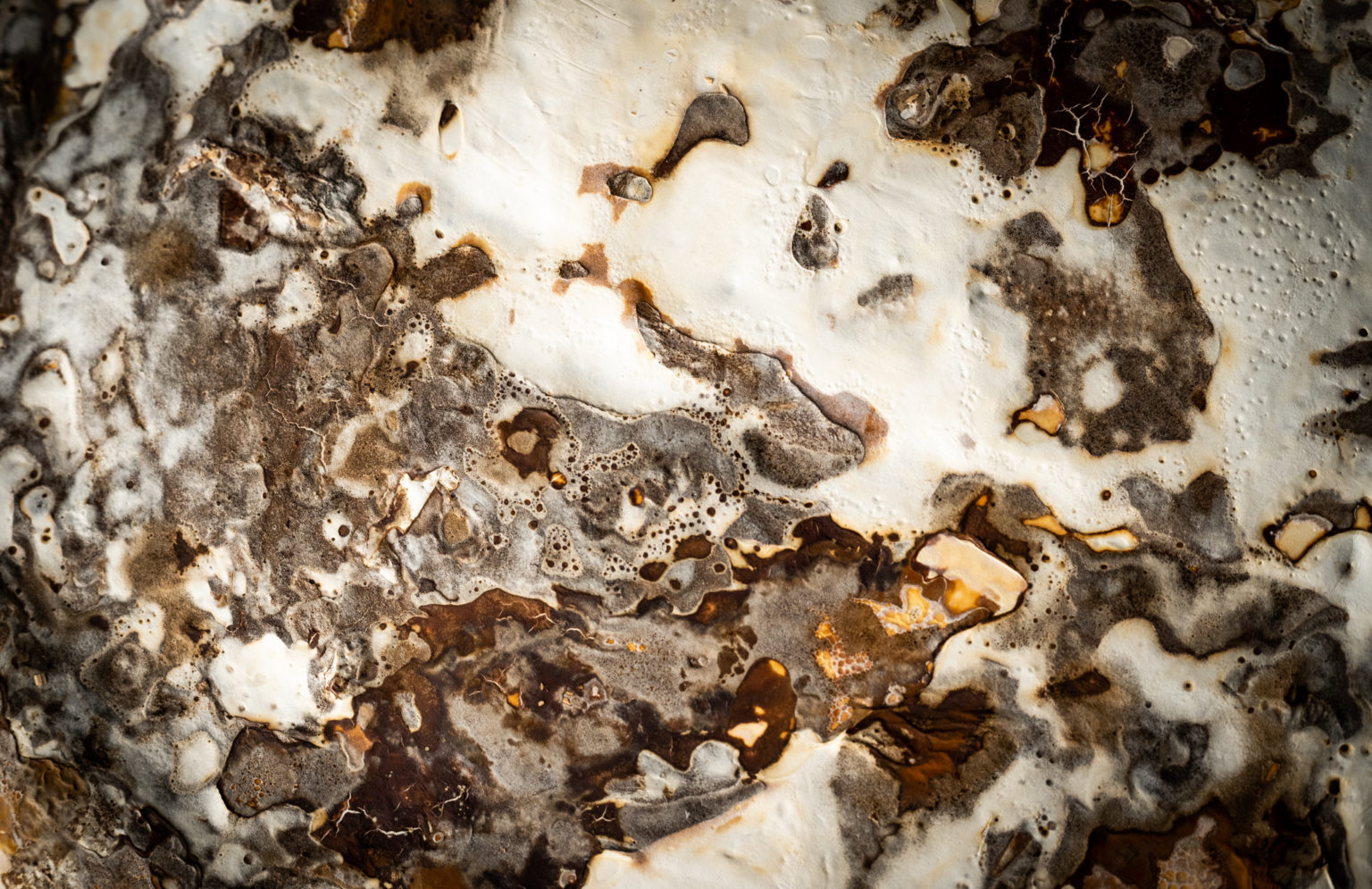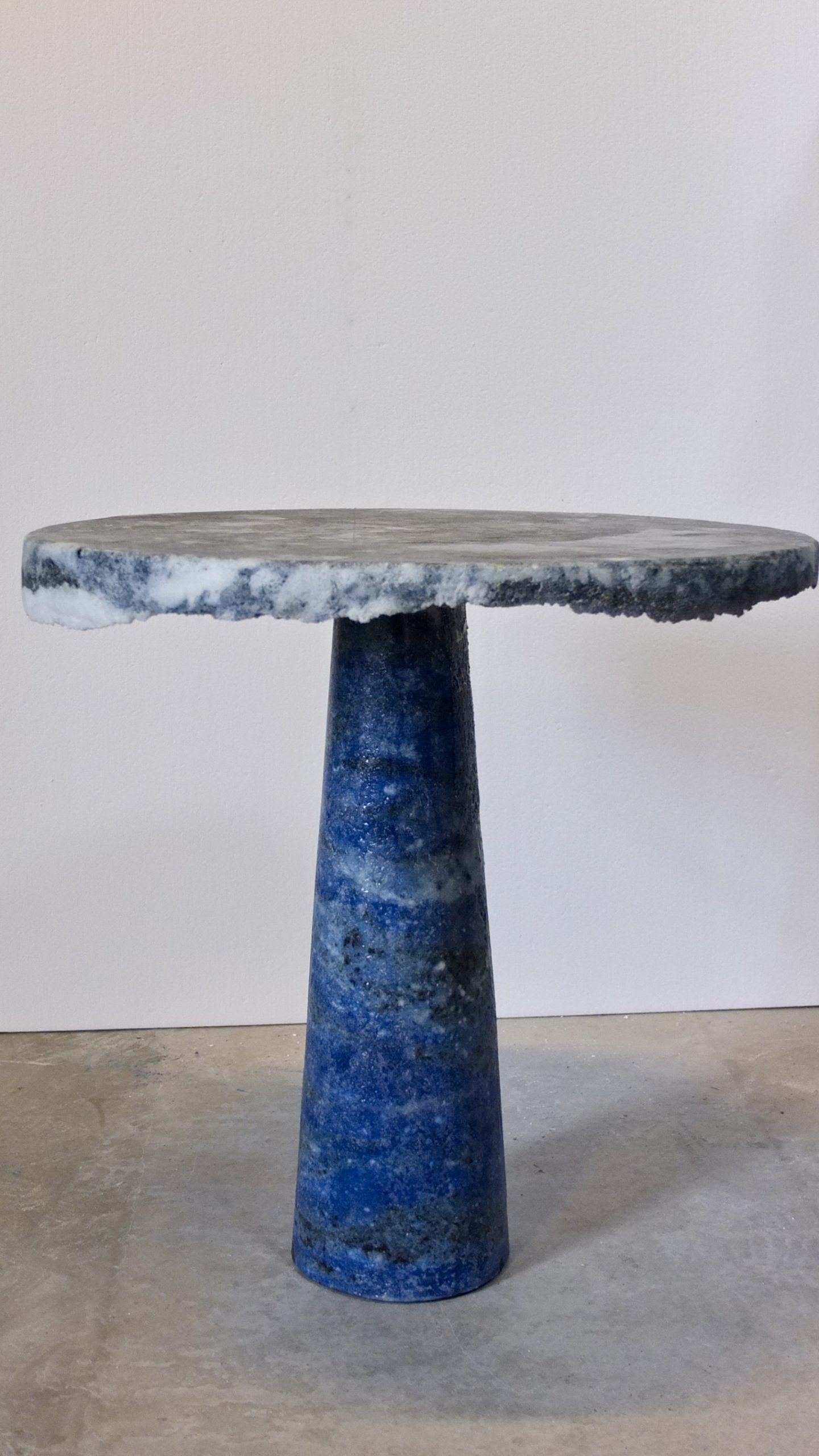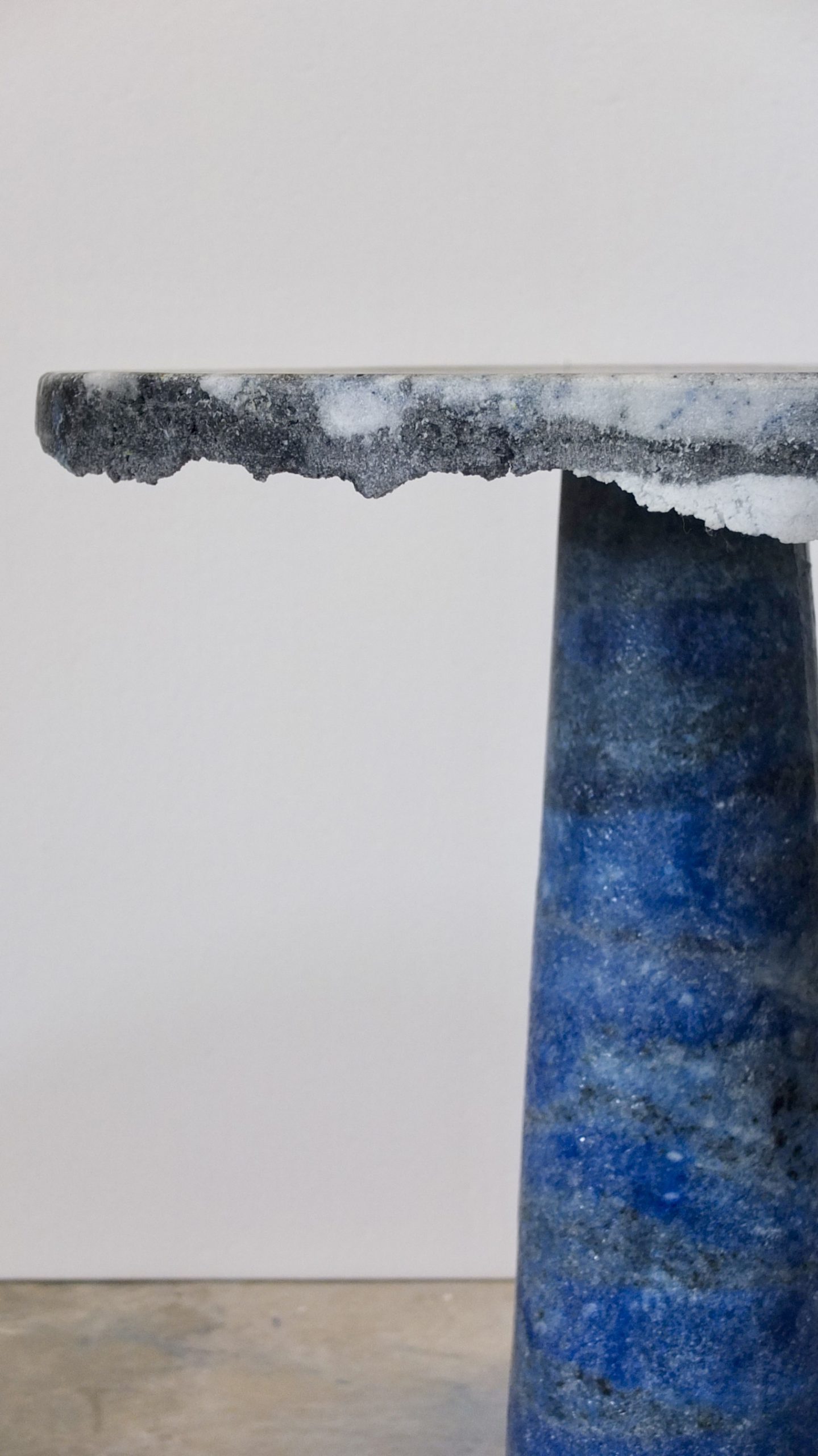

Unexpected Media: 8 Materials You Didn’t Expect to See on the Global Design Scene
From cow dung to mushroom mycelium to 3D printed sand, this edit showcases examples of contemporary collectible design created from unexpected media. Similar to the unassuming construction and waste materials mentioned in a previous Adorno edit, these makers have looked beyond traditional media to develop practices based around the unexpected. They make use of non-traditional raw materials, altering perceptions of what one can expect to encounter in the collectible design world.
Addressing a need for more sustainable approaches to design, inventive processes transform bone, cow dung, and coal into refined ceramic-like materials, while mycelium, combined with sawdust, grows to form a cushion-like seat. Naturally sourced materials including sand, salt, and amber are used to develop pieces which play to their innate strengths and man-made foam, commonly used in construction projects, playfully takes on a classical form. In their exploration of unusual materials, these makers have carved out a unique space for themselves through foward-thinking design and a desire to innovate.
This unexpected materials edit features the work of Atelier Haute Cuisine, Studio Lindey Cafsia + Studio Carbon, Rive Roshan, Roxane Lahidji, Siim Karro, Stefania Ruggiero, Valdís Steinarsdóttir, and Jelizaveta Suska.
Amber: Jelizaveta Suska, “Rebirth 1” Necklace
Amber is a fossil from around 44 million years ago; it is well known with its history and myths and was also widely used during Soviet Union. It is usually valued by its size, color, and inclusions. Jelizaveta Suska aims to destroy this familiar perception and its accepted value by sewing, dyeing, and ignoring its inclusions; stepping away from what she has seen so many times before.
View Jelizaveta Suska’s showroom, including “Rebirth 1” Necklace (€900 ex. VAT)
Bone: Valdís Steinarsdóttir, “Just Bones”
“Just Bones” focuses on developing a strong, natural material from animal bones. The bones are ground and their various qualities used to develop and create a material that is similar in strength to MDF. Today, a large proportion of animal carcasses are disposed of after slaughtering, thereby wasting valuable raw materials like bones.
View Valdís Steinarsdóttir’s showroom, including “Just Bones” (€3.500 ex. VAT)
Coal: Atelier Haute Cuisine, “Cofit-20”




Atelier Haute Cuisine wanted the light bulb to be part of the design so, instead of designing a light fixture that covers the light bulb, they made a pedestal to display it. A brick with two different imprints of a bulb with socket. The material used for this limited edition of 100 pieces is a concrete mixture made out of pieces of coal and coal waste that the studio collected in the area where they grew up.
View Atelier Haute Cuisine’s showroom, including “Cofit-20” (€330,40 ex. VAT)
Cow Dung: Studio Lindey Cafsia + Studio Carbon, “MORPHS”










Sustainability and circularity are important aspects of the designs. Lindey Cafsia + Studio Carbon use bio-based composites in which cow-dung is the main ingredient. This material is available in large amounts around the world and is rather seen as waste instead of precious raw material. “MORPHS” have a stony structure and resemble concrete and ceramics, but are lighter in weight. The production is handmade and no glazing is used. In this way, each piece can be reused as raw material after its intended usage period.
View Studio Lindey Cafsia + Studio Carbon’s showroom, including “MORPHS” (€70,40 – €120 ex. VAT)
Foam: Stefania Ruggiero, “Andrea Vase”
The “Andrea” vase is made with polyurethane foam, spray painted and resin-coated. The material becomes a concept of lightness and a symbol of an ephemeral world. The piece faces the weight of classicism with a playful yet aware attitude, accompanying us on a journey of scenographic archeology from a future civilization.
View Stefania Ruggiero’s showroom, including “Andrea Vase” (€700 ex. VAT)
Mycelium: Siim Karro, “Myce” Stool




The “Myce” Stool is made from a mushroom mycelium-based biomaterial. The seat is formed from hardwood sawdust and mycelium which acts as a binder that joins the seat with the wooden legs. It takes around four weeks to grow a chair in laboratory conditions.
View Siim Karro’s showroom, including “Myce” Stool (€625,60 ex. VAT)
Salt: Roxane Lahidji, “Marbled Salts – Blue & Black” Side Table




In ancient times, salt was rare and costly. Yet, since the industrial revolution, it has become so cheap and easily available that we longer recognise its value. With ‘Marbled Salts’, Roxane Lahidji explores new possibilities, reinventing salt as a sustainable design material. She makes use of its unique physical properties as a self-binding composite to create a set of tables and stools.
View Roxane Lahidji’s showroom, including “Marbled Salts – Blue & Black” Side Table (€3.000 ex. VAT)
Sand: Rive Roshan, “Sand in Motion” Twist Vessel Small
Movement caught in a moment of time through 3D-printed sand objects made with sand from the Bavarian river banks. “Sand in Motion” captures a glimpse of movement through distinctive sharp form, creating a mesmerizing display of light and shadow.
View Rive Roshan’s showroom, including “Sand in Motion” Twist Vessel Small (€600 ex. VAT)











